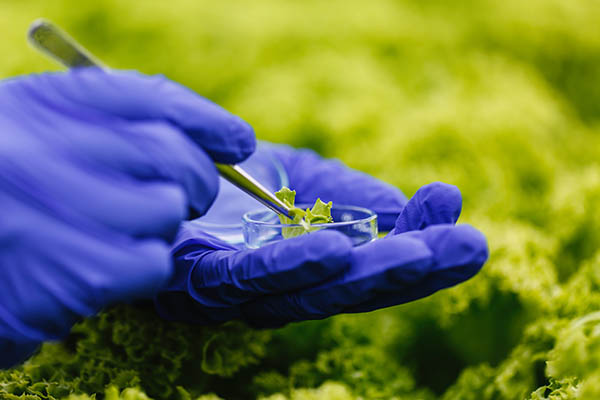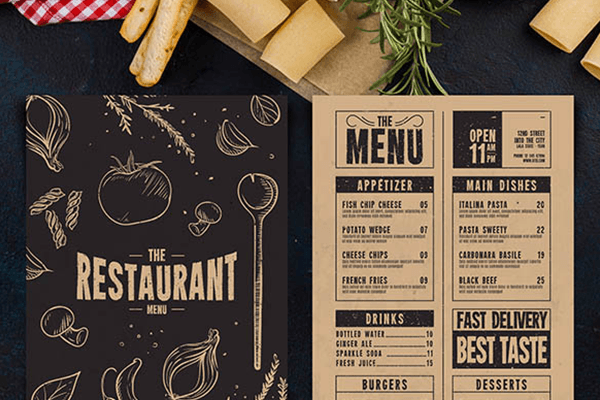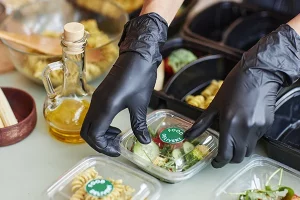It has been a long time coming, and now, the HHS and the FDA will release a list of foods described as “high-risk foods.” The agencies will also mandate companies that deal with these foods to keep records of them, and make these records public by 2020. This new development is coming on the heels of an order by a District Court Judge after the HHS and FDA were sued for not observing the Food Safety Modernization Act (FSMA).
Foods Likely to be Considered “High-Risk”
High-risk foods are foods that usually hold harmful bacteria because of the way they are produced. Foods likely to be considered high-risk are not only limited to popular ones like chicken or fish. Foods like vegetables, prepared fruits, and salads are also considered high-risk.
Some of these foods are more receptive to bacteria growth than others and it is fairly tough to detect contaminated food. They mostly smell, look, and taste the same as healthy food.
Therefore, while the FDA and HHS have yet to list any food as high-risk, the following are the likely candidates:
- raw fruits and vegetables like romaine lettuce, spinach, and cantaloupe
- raw and cooked meat including poultry such as chicken and turkey, and foods containing these ingredients, such as casseroles, curries, and lasagne
- dairy products such as dairy-based desserts and custard, like cheesecake and custard tarts
- eggs and egg products such as quiche
- small goods such as hams and salamis
- seafood such as patties, seafood salad, fish balls, stews containing seafood and fish stock
- cooked rice and pasta
- prepared salads like coleslaws, pasta salads, and rice salads
- prepared fruit salads
- ready-to-eat foods including sandwiches, rolls, and pizza that contain any of the menus above
Read more: Best Recipe Nutrition Analysis Method: How to get Nutrition Facts for any Recipe
How Does This Impact Your Menu Items?
The record-keeping requirement that will be enforced next year applies only to middlemen and it does not apply to farmers or restaurants. This requirement will mandate middlemen companies to keep an excellent record of where these high-risk foods come from and where they will end up. This is also for the agencies, to help them identify any future contamination and avoid its spread, by tracking its source and how it all started.
However, that is not to say that there is no repercussion for restaurants alike. Experience has shown that lists like these name shame food companies and cause them to change their products through adverse publicity. KFC, Subway, and Taco Bell are a few restaurants that had to stop using products that are considered ‘high-risk.’
In other cases, companies were required to add labels to their products, warning customers of the risk in consuming these foods, a move which usually leads to companies using alternative products rather than just slapping warning labels onto their products.
Therefore, it is conceivable that some menus have to be dropped from your list. However, not all high-risk foods can be dropped. In this case, steps must be taken to mitigate the risk of food contamination.
Read more: Spice it Up! Labelling Dishes according to Scoville Units

What Can Be Done to Mitigate Risk to Your Bottom Line?
Every year, many people are hospitalized for food contamination. In the U.S. alone, food contamination affects one in six persons and causes the death of about three thousand people yearly. Food poisoning also cost the U.S. economy about $15 billion yearly.
As a result, restaurants lose millions of dollars when cases of food poisoning occur, as they are the most common source of outbreaks. An example of such a case was when Chipotle lost almost $11 billion in market value as a result of food poisoning in its outlets. It also suffered lower revenue and falling stock price with a 44% drop in profit.
The restaurant chain also underwent government investigation and legal actions. Even more so, it suffered severe reputational damage and the company spent $50 million in trying to gain new customers.
However, not many restaurants have the financial muscle to withstand the kind of damage that Chipotle went through. Therefore, it is always best to implement safe practices to prevent the risk of food contamination.
To mitigate the risk that high-risk food poses, you can remove the most dangerous ones from your menu list. For those that you cannot remove from your menu, you should avoid the risk of contamination altogether. You can do this by breaking any of the three stages of food contamination.
The first stage is the existence of bacteria in the food. The second is favorable conditions for the bacteria to grow (between 5°C and 60°C is the temperature danger zone). The last stage is adequate time for the bacteria to grow.
Break any of these stages and food contamination will be prevented. This can be done by:
- safely preparing food in your restaurant
- following hygienic practices
- securely storing and displaying food menu
- avoiding cross-contamination
- training your food handler in best practices
- properly serving and labeling food
- taking good care of utensils
- maintaining a clean restaurant, etc.
Another way of mitigating risk is to use a nutrition analysis software, and an excellent choice is MenuSano Nutrition Analysis Software. Traditionally, obtaining nutrition information of a recipe or dish meant sending food items to a lab for analysis. This method is quite costly, and the turnaround time can take about a month.
MenuSano nutrition analysis software allows restaurants to analyze their recipes and dishes online with an advanced application. It allows restaurants to easily swap ingredients and find out the nutritional content of each meal.
Furthermore, MenuSano’s costing module also identifies how changing recipes will impact your restaurant’s bottom line. All of these features will enable you to make smart decisions on what works best for your restaurant. You can easily meet regulation standards, your customers’ expectations and improve your bottom line all in one go. Clearly, the advantages of using MenuSano are indeed limitless.
Another benefit of using MenuSano is its easy to print nutrition labels. MenuSano’s trusted databases utilize the Canadian Nutrient File (CNF) and the United States Department of Agriculture (USDA) as its data sources, with the option to add custom ingredients. This makes it easy for restaurants to print nutrition labels for each meal they serve, which includes their added custom ingredients. By using these advanced features, it will positively display your restaurant’s commitment to the health of your patrons.
Read more: Things that MUST be on a Food Label

Conclusion
Very few food businesses could survive the combination of a dramatic drop in diners, costs, and damage to reputation that Chipotle underwent. This demonstrates that food safety has to be a priority for any restaurant if they want to thrive in a competitive market.
As the adage goes, “prevention is better than cure.” Don’t wait for food contamination to occur at your restaurant. Prevent it before it starts. In this regard, MenuSano’s Nutrition Analysis Software is your best bet in keeping your customers safe and healthy.



















